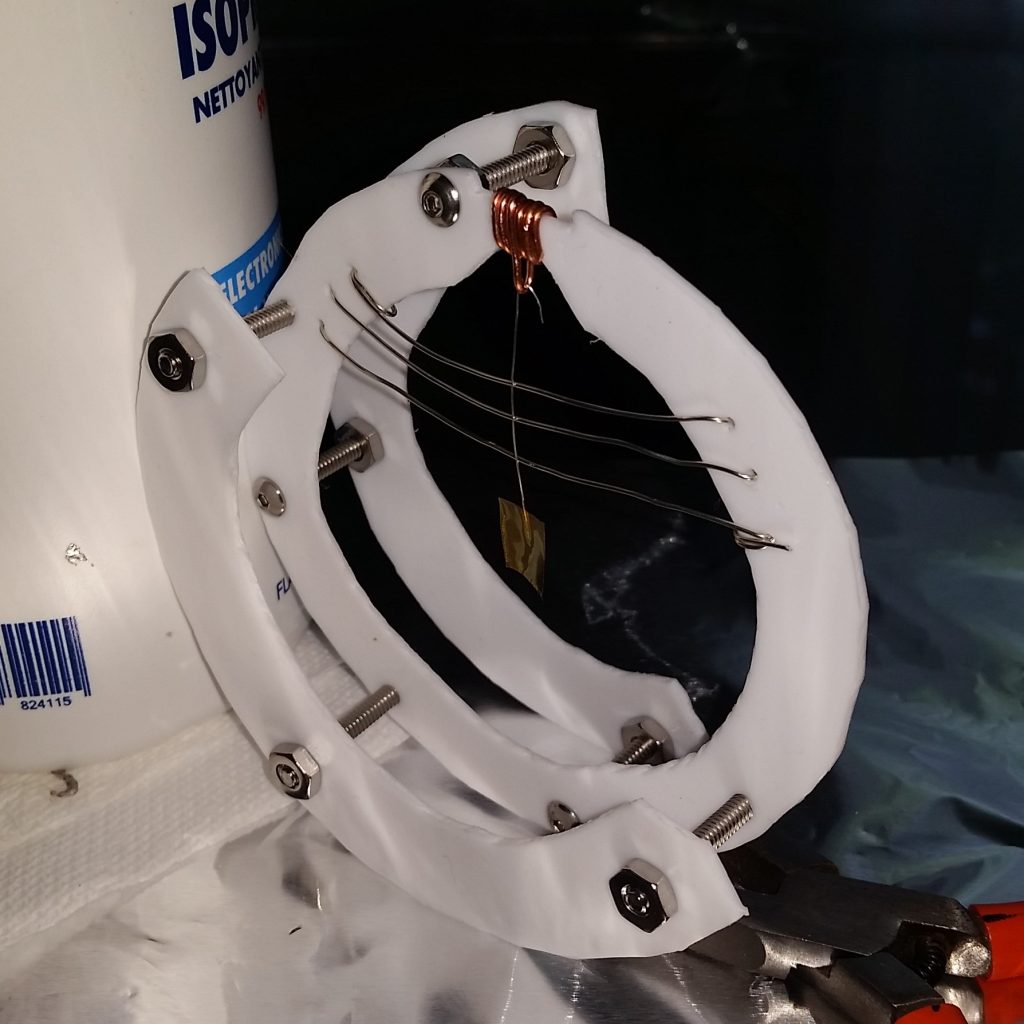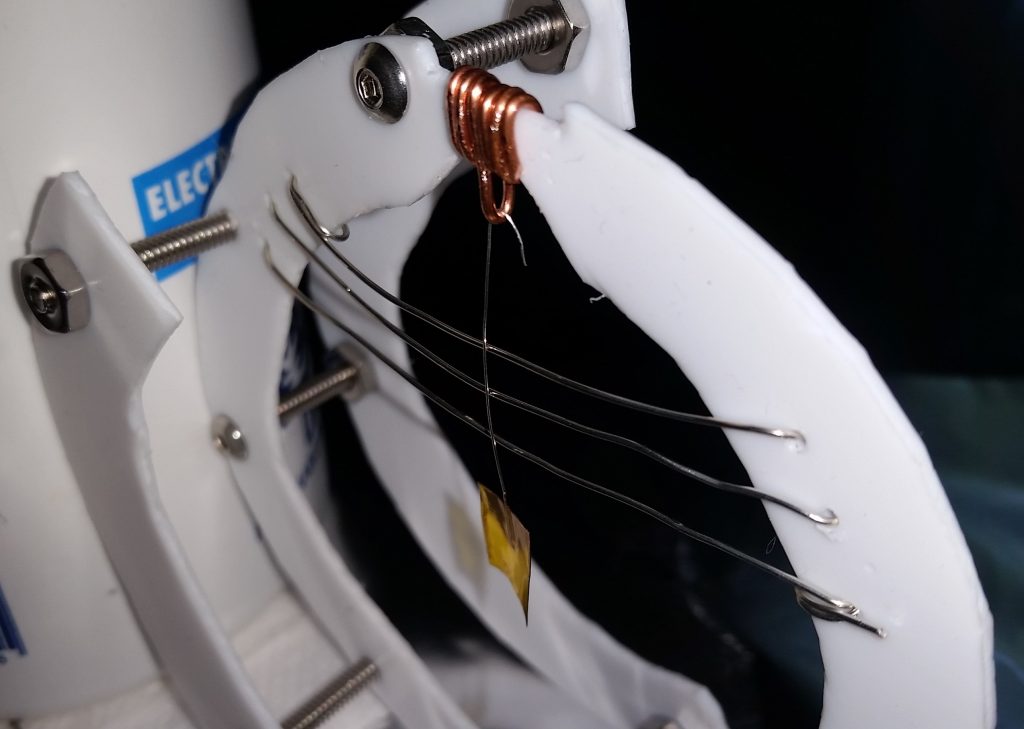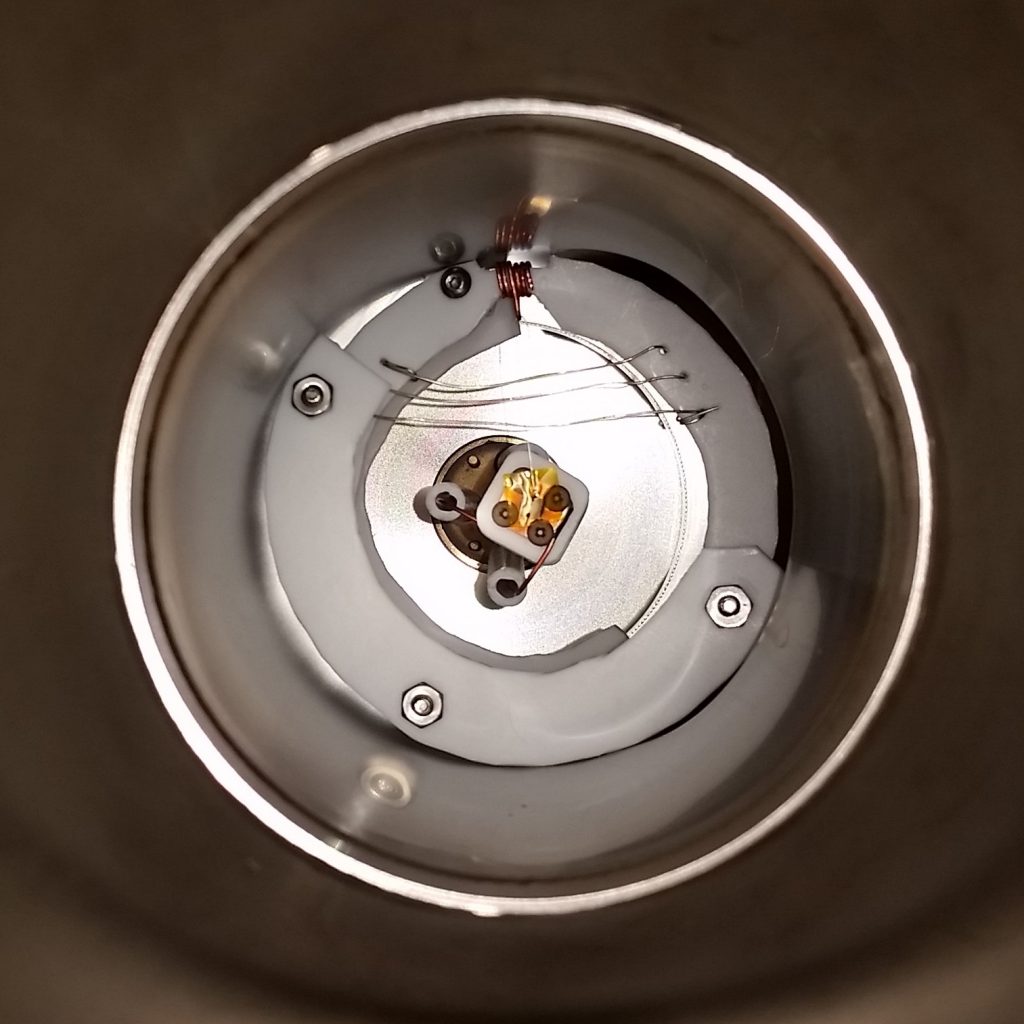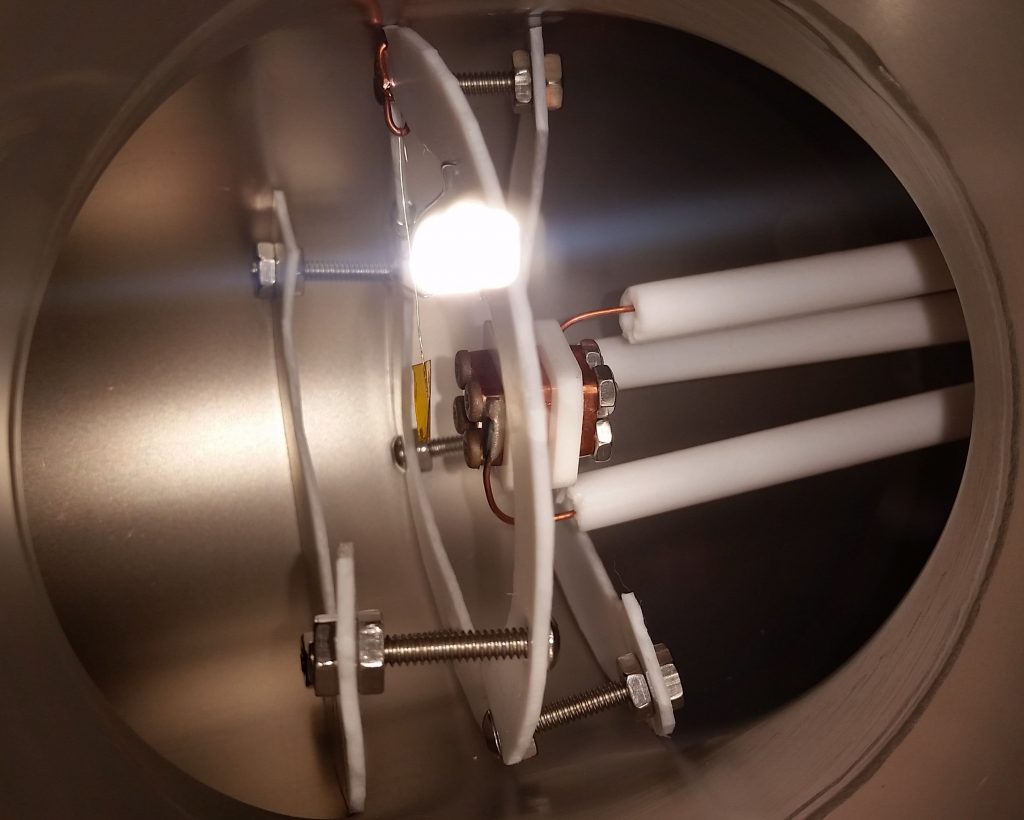With the resounding success of the first successful ignition testing of the AIS-gPPT2-1C Single-Channel Gridded Pulsed Plasma Thruster, additional qualifications could be explored to start better gauging thruster performance. The two major tests at this stage include lifetime testing, and impulse bit/thrust measurements. Originally, I was planning on proceeding with lifetime tests. However, after further reviewing literature on micro-PPT testing, as well as looking at scaling laws to determine expected performance, I decided that impulse bit and thrust would be the primary gauge of performance going forward for further improvements of the thruster.
While pulsed plasma thrusters are the oldest form of electric space propulsion, and have been widely flown and tested on numerous satellites, with countless papers in the field, relatively little work has been done at the low-energy class of thrusters. One of the main challenges of the field moving forward is in fact scaling down the technology for use with smaller satellites. Reviewing the literature further, there is very little work and information available on thrusters operating at the <10J level, and almost nothing on 1J or sub-joule PPTs. However, I stumbled across a couple of papers describing a very simple and effective way of qualifying micro-PPTs at the lowest energy scale. By using a ultra-light micro-pendulum, and knowing the parameters of the pendulum, impulse bit can be determined. Particularly at this range, where operation is expected to fall around 10uN-s or less of impulse-bit, thrust measurement is quite a challenge. To further compound this challenge, my micro-propulsion testing chamber is extremely small compared to conventional thruster stands. Normally, testing chambers are very large units, often large enough to crawl into or even walk in. My 6″ conflat based chamber only has an inner diameter of about 4″, so space for thrust measurements becomes incredibly tight.
Often times, thrust measurements are done on a full precision balanced thrust stand, located inside the vacuum chamber. These however are large, very complex, costly, and beyond the capabilities of what I have at home, in terms of both machining, and precision measurement, as well as space constraints, making such a thrust stand in my current setup impossible. However, a micro-pendulum could be made with little effort, and reasonably well calibrated to provide rough estimates on impulse-bit performance.
Using parts I had from leftover projects, I built a simple and small micro-pendulum that could fit inside my propulsion chamber. This was designed to slide into the blanked-off end of the chamber opposite of the thruster feedthrough. The pendulum consists of a Teflon frame, held together with stainless-steel hardware. A fulcrum was made by wire-wrapping copper wire into a secure loop at the top of the frame. A 30 gauge tin-coated copper wire was used as the pendulum string, with a length of 3cm from the fulcrum to the top of the pendulum head, and a 1cmx1cm square flapper was made with two pieces of 1mil Kapton tape, with 0.5cm of the wire extending down into the center of the flapper for support.
When I first made the frame and mounted it into the chamber, I ran into the issue of the ultra-light Kapton flap sticking to the thruster from residual charge. I therefore decided to add a stopper bar to prevent the pendulum from sticking to the thruster, and forcing the pendulum to always start consistently from the same starting point location. At first, a single thicker gauge wire was used. However, testing it by lightly puffing air to make it move, I found the bar caused the thin wire to warp upon impacting the stop-bar when returning to the start position. I then tried a Kapton tape stopper, which caused movement issues due to the static attraction of the Kapton flapper to the Kapton stopper. Finally, I made a stop-bar with three thin-gauge wires to cushion the impact of the bar and spread the force over a larger area to prevent warping. With this solution finally working well, the pendulum frame was inserted into the chamber, the pendulum mounted, and the entire assembly aligned to be centered with the thruster output.
With the pendulum aligned, and the thruster already to go from the previous ignition test, the chamber was sealed up and prepped for the impulse bit test. By recording operation of the pendulum when the thruster fires on video, and measuring the resulting angle and deflection after, impulse-bit can be estimated, and overall thruster performance can be qualified. While it is not the most accurate method, it is simple, cheap, and works with the space I have.
The test was commenced on June 2nd, 2019. Pumpdown went smoothly, with the vacuum and cooling system performing extremely well. Despite the increased humidity and overall ambient temperature as we progress into summer months, the test stand is still operating within spec. Like the previous tests, an ultimate pressure of 1×10^-5 Torr was established prior to thruster ignition. The test was also live tweeted on the Applied Ion Systems Twitter account, like all of my previous tests as well. For this test, due to the fact that the vacuum gauges were prone to breaking, even with proper grounding and connections with no arc faults, I have decided to remove the gauge electronics for before the thruster is fired, to isolate the gauges from damage due to the pulses, until I can afford a ceramic high vacuum break to isolate the gauge from the chamber.
The 1uF capacitor was charged to about 1300V, corresponding to a stored energy of about 0.8J. For these PPTs for Pocketqubes, I have been rapidly narrowing down the operational specs for what can be reasonably achieved at this level, with a max of only 1W power available for propulsion. If the test stand works, it would allow me to dive into almost uncharted territory of research of sub-joule micro PPTs.
The engine fired up without issue. The first shot launched the pendulum – the system was fully working and operational! At this moment, I had achieved successful operation of the micro-pendulum, and could now qualify impulse bit and thrust of the thruster! Video of the test can be seen below. During the test, repetition rate was slowly increased, and video was captured to establish a range of estimated impulse-bit measurements.
Efforts are currently underway to start measuring and interpreting the results of the test. However, initial estimates are showing that impulse-bit should fall within the range of about 3-10uN-s. With a realistic repetition rate of about 1/3Hz based on available power on a PocketQube, this translates to a thrust of a couple of uN. I will be uploading full analysis, testing, and results reports, as well as further articles on the math and analysis behind these measurements. This data appears to agree with both empirical scaling laws for low-energy coaxial PPTs operating in the electro-thermal regime, as well as the very little data published on impulse bit measurements on a sub-joule pulsed vacuum arc thruster from the Kyushu Institute of Technology in Japan.
This success represents another major advance here at Applied Ion Systems, with a powerful new tool added to my propulsion development arsenal. In addition to these efforts being potentially the first, and only official high vacuum research and development of open-source advanced EP on a fully independent, maker-based home-built system, this further propels the efforts at Applied Ion into the field with potentially the first ever impulse bit measurements of an electric propulsion thruster at high vacuum at home.
With impulse-bit measurement capabilities now possible, the thrusters built and developed here at Applied Ion Systems can be qualified, compared, and measured. This will allow for me to release data on actual thruster performance and optimization for a new class of sub-joule thrusters for PocketQubes. Additional testing will include lifetime tests, current pulse measurements, plume current, as well as ion exhaust velocity measurements through time-of-flight. It has been a major challenge, with many struggles along the way. But finally, after a bit over a year after starting from nothing, I am at the point to begin producing data for the field. While my resources and funding is practically non-existent still, I hope to inspire other enthusiasts in the field with these efforts, and provide meaningful contributions to the area of advanced electric micro-propulsion utilizing a unique, open-source, DIY maker approach radically different from industry or academia.




